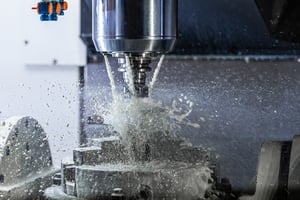Machine tools such as high-pressure coolant systems remain critically important to the operation of...
CNC Machine Accuracy and Repeatability
CNC machining is currently one of the most prevalent industrial methods. This is attributed mostly to its provision of automation solutions and its great accuracy, precision, and narrow tolerance range. They are produced in several wealthy countries. According to Statista, the leading nations in machine tool manufacture in 2021 will be China, Germany, and Japan. That said, accuracy, precision, and repeatability are common buzzwords people encounter when checking out CNC machines. While computer numerical controlled (CNC) machines provide these benefits and more, many CNC machine shops abuse terminology like 'accuracy,' 'precision,' and 'repeatability' without explaining them to their consumers. In this article, the terms will be defined and explained in detail to make the terms easier to understand and differentiate.
What Is CNC Machine Accuracy?
Accuracy denotes a measurement's proximity to its genuine value. To put it another way, accuracy is the disparity between a system's actual measurements. The measurement's accuracy is considered high if the difference is exceedingly small. It is also known as the degree of conformance. Consider the following example to help you understand. When you visit a CNC machining service provider, they claim that their CNC machine tools are very precise. This implies that the tool will precisely cut the item if its instruments are configured to cut a metal piece 50 mm long.
If the instrument is accurate, as the service provider claims, it will be exactly 50 mm without making any mistakes. Many factors influence the quality of CNC machined components, including tool selection, toolpath programming, part design, mechanical skills, workpiece clamping tactics, etc. Critical-path components, such as robotic arms used in laser surgery or landing gear elements in high-performance aircraft, must function consistently.
CNC Machine Repeatability
Repeatability refers to the variation in the result throughout multiple tries to accomplish the same result, such as moving to the same location, taking the same measurement, or bonding successive stacks of wafers under the same circumstances. Frequent mistakes are common in repeatable, faulty processes. Accuracy can be enhanced by doing the following:
- Calibration and adjustment
- Using the control system to map and compensate for errors. Backlash and variations in screw pitch during flight duration are examples of such errors.
- Low repeatability is frequently caused by external conditions such as heat, which causes differential thermal expansion, strain relief, and reset. As a result, environmental control can be a vital component in developing a precise machine or instrument.
Understanding accuracy and repeatability make speaking with any machine service provider in the U.S. simple. It will also help you understand all the crucial specs and capabilities and make comparing them to your requirements easy, allowing you to determine whether or not to purchase the services. Are you looking for automation solutions? Contact ATS Systems today!
.png)



